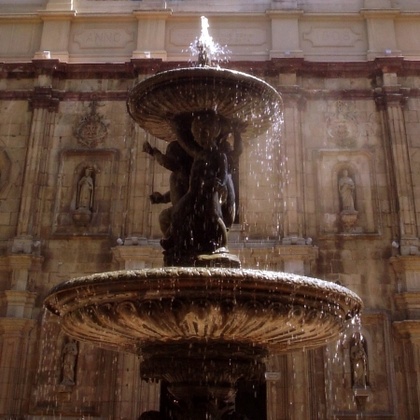Iglesia de Santo Domingo
Take a walk on the wild side.
The chaotic northern edge of the centro histórico is a cameo of working-class Santiago. Its captivating spirit has been defined over the centuries both by its proximity to the poorer districts across the river and by its role as back door for the goods arriving from the seaport and the countryside at the Estación Mapocho – the Northern Railway station. In spite of the demise of the rail link, the area is still known for any number of commercial activities, from wholesale markets to textile retailers. Over the centuries, this business-oriented also harboured an ethnically-diverse population of Middle Eastern, Korean, Peruvian and Chinese communities, making this the multicultural heart of the capital, though it remains a traditional and quintessential corner of the capital.

Unlike any other: Iglesia de Santo Domingo
In addition to the piquancy of its crowded streets, the area boasts something of a run-down beauty. Old, elegant palaces serve insolently as market lock-ups, smoky pool bars and brothels, in a display that can sometimes – though not always – be classified as picturesque. Yet there are some genuine architectural jewels that stand as proudly as they always have. Among them is the Iglesia de Santo Domingo, a church with origins that date back to 1557. Following three devastating earthquakes, João dos Santos Vasconcelos, a Portuguese architect, built the current structure in 1747 using quarried stones, resulting in a church of radically different character to any other in the area. The façade is austerely decorated with effigies of saints, and is crowned with two matching bell towers incorporated in 1808. The church’s inside is in line with the simplicity of the external ornamentation; the main nave is wide, dark and feels medieval with its bare stone pillars and complete absence of colour. Decorations too, are few and far between, the most notable being an image of the Virgin of Pompeii, which pulls the crowds every Thursday.